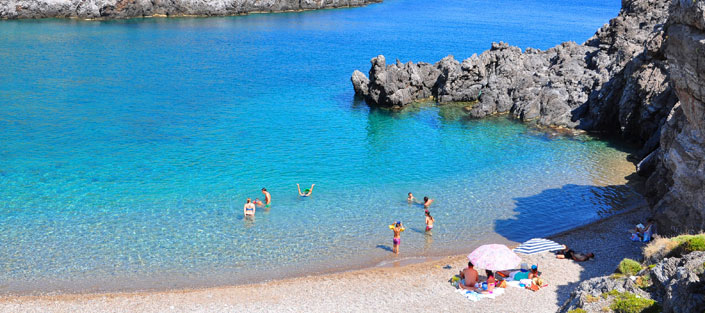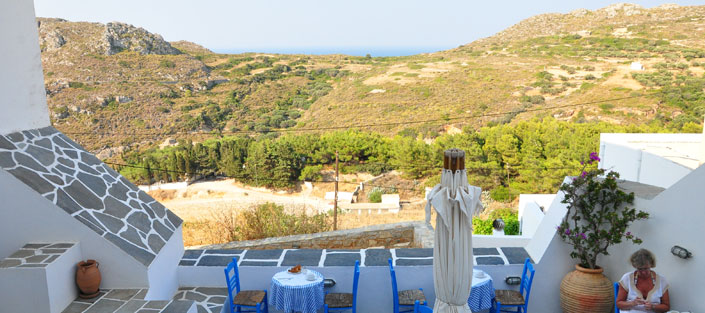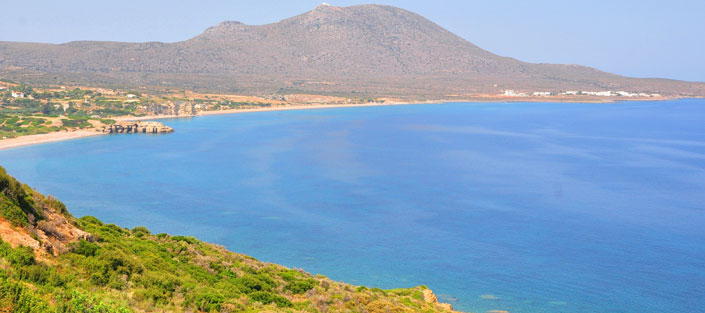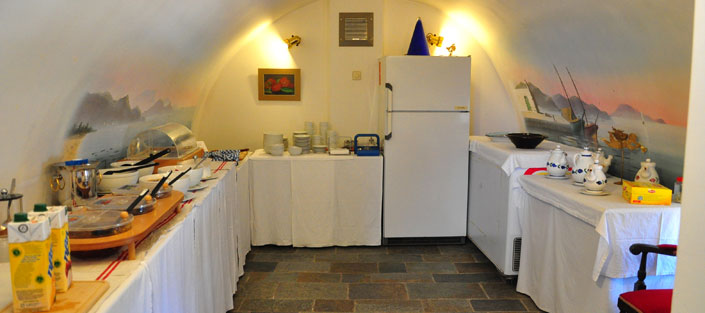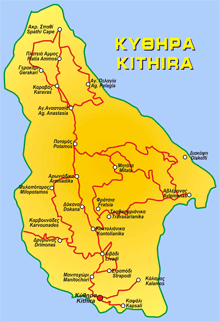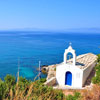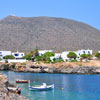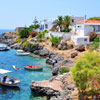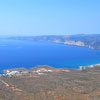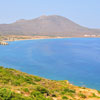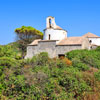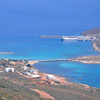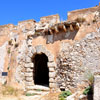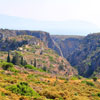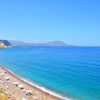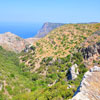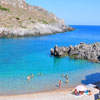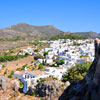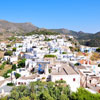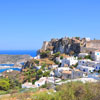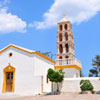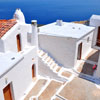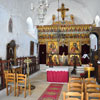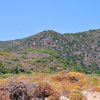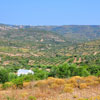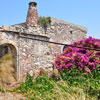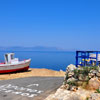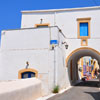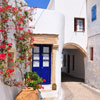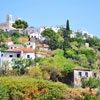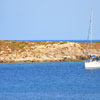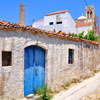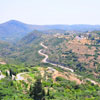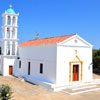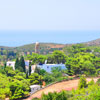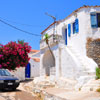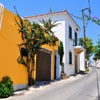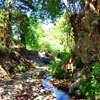Visit Kythira
Island Presentation
Located between the Ionian, the Aegean and the Mediterranean Sea, Kythira is an island full of surprises, contrasts, and natural beauty.
Covering about 280 square kilometres (28 km long and 14 km wide), the island of Kythira is comparable in size to Malta, Ibiza or Paros. Visitors can get around by car, motorcycle, scooter or bicycle.
Frequently mentioned in painting and literature, Kythira does not constitute a common tourist destination. It has an authentic Greek allure. It is a very sunny island with temperate climate. The temperatures in Kythira are very mild.
A vacation in Kythira means relaxation, calm, and daydreaming, enjoying the different landscapes of the island. In Kythira's unique atmosphere, one finds oneself in a world between the Greece of yesterday and today, blending Greek, Italian, and French influences.
Kythira is a gateway to Greece, the Aegean Sea and Italy. But above all Kythira is a door to your vacation and Hotel Margarita holds the key.
Brief History Of The Island
The island of Kythira is primarily a first class geo-strategic location which naturally attracted many peoples throughout its history. From the third millennium BC Kythira was colonized by The Minoans of Crete. In antiquity, Kythira was best known as the island of Aphrodite, goddess of beauty and love and there is a temple dedicated to her. In the Iliad, Homer refers to two heroes of Kythira, Lycophron and Amphidamas. In 424 BC Kythira became the ally of Athens during the Peloponnesian War.
After Roman Rule, Byzantium had dominion over the island. After a period of depopulation in the early Middle Ages, Kythira was under the sovereignty of the rulers of Monemvassia. From the 13th century, the island knew a 600 year period of Venetian domination, at first with the family of the adventurer Marco Venieri, then with the Serenissima (Republic of Venice) in the sixteenth century. Like the other Ionian islands, Kythira has never experienced Turkish rule, except for a short Russo-Turkish occupation between 1715 and 1718.
The turbulent history of Kythira is punctuated by terrible pirate raids, including the notorious Barbarossa, leaving the island completely destroyed.
Given the devastation of these attacks and the constant threat of Turkish military operations in the 16th century, the Venetians built four fortresses (Mylopotamos, Avlemonas, Paleochora and Chora) to defend and protect the island. The Venetians' main objective was to reinforce Kythira's key - position, which controlled shipping traffic between the western and eastern Mediterranean. Kythira and Crete are situated exactly halfway between the Venetian Empire and the Venetian possessions on Greek mainland, the Adriatic, the Aegean Sea, Egypt and the Near East. This is the famous Spice Route.
After the Venetians in 1797, it was the turn of the French. Following the Italian Wars, led by General Bonaparte, Kythira was attached to the French Republic and the ‘Département’ of the Aegean Sea.
The first French occupation was short. The Russians controlled Kythira between 1799 and 1807, when Napoleon's France occupied Kythira for the second time.
From 1812 to 1864, Kythira was part of the Republic of Seven Islands, a British protectorate. After a long wait, in 1864, Kythira was finally reunited, along with the six other Ionian Islands, with the newly established Kingdom of Greece.
Tourist Sites
Hotel Margarita is your ideal starting point for all kinds of sightseeing trips around the island of Kythira.
Museums
Byzantine Museum of Livadi
Beaches
Kapsali
Melidoni
Limnaria
Vroulea
Fyri Ammos
Kombonada
Limion (Mylopotamos)
Diakofti
Paleopoli
Paleopolo-Limni
Avlemonas (nicknamed the 'Bath of Aphrodite ")
Kalada
Aghia Pelagia
Platia Ammos
Fortresses
Chora
Mylopotamos (Kato Chora)
Avlemonas
Palaiochora (Agios Dimitrios)
Monasteries
Monastery of Aghia Elessa
Monastery Panagia Myrtidiotissa
Monastery Panagia Orfana
Monastery of Aghia Moni
Monastery Osios Theodoros (Venerable Theodore) Potamos
Monastery of Aghios Ioannis Engremmos Kapsali
Churches and chapels
Church of Agios Minas, Chora (sixteenth century)
Church of Agia Anna, Chora (seventeenth century)
Church of Aghios Dimitrios (thirteenth century) - Village of Gerakianika: Surprisingly irregular architecture, has four chapels inside
Chapel Aghia Sophia (Kalamos)
Church of Aghios Charalambos, Mylopotamos
Church of Agios Theodoros, Potamos
Church of Panagia Ilariotissa, Potamos
Chapel of Aghia Varvara, Palaiochora
All churches and chapels in Mesa Vourgo, Chora
Towns and Villages
Livadi
Fratsia
Avlemonas
Paleopoli
Mitata
Aroniadika
Pitsinades
Potamos
Aghia Pelagia (Fyri Ammos Lorentzos and Kalamitsi)
Karavas
Caves and natural sites
Cave of Aghia Sophia (Mylopotamos)
Cascade of Mylopotamos
Cave of Aghia Sophia (Kalamos)
Creeks of Avlemonas
Gateway and sanctuary minoan sanctuary of Aghios Geogios Vounou (Saint-Georges of the mountain)
Cave Housti (Diakofti)
Source of Ai-Giannis, Viaradika
Gorge Kakia Langada
Cave and source Galini (Agia Pelagia)
Sources of Amir Ali (Karavas)
Sites of architectural interest
British School of Melapidea (Gothic)
Bridge of Katouni
Lighthouse of Mudari
Patrician School of Agriculture Karavas (early twentieth century)
Lighthouse of Kapsali
Windmills of Kalokerines and Livadi.





